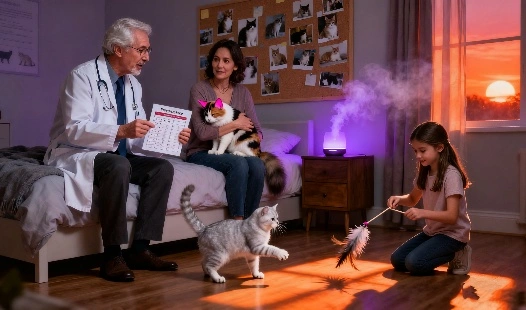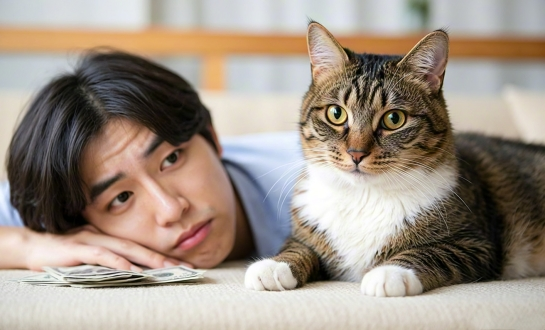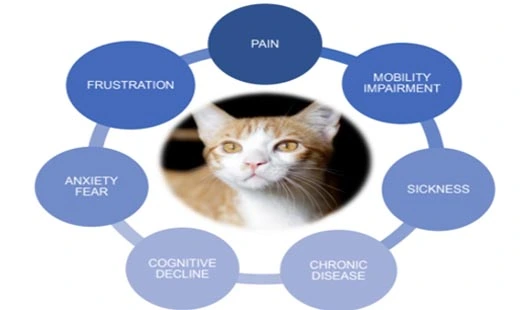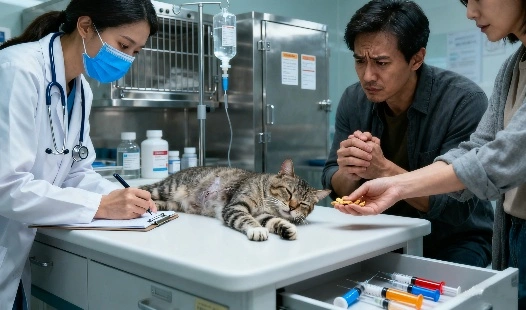Clinical studies and real-world field trials have consistently reported success rates exceeding 80% for cats treated with GS-441524, demonstrating its remarkable effectiveness against FIP. This high level of efficacy has fundamentally changed the outlook for cats diagnosed with the disease, transforming FIP from what was once considered a nearly certain death sentence into a manageable and treatable condition. Veterinarians and cat owners now have reason for optimism, as timely intervention with GS-441524 can lead to significant recovery and improved quality of life for affected cats, marking a major milestone in feline veterinary care.
The Best Treatments for FIP in Cats: What You Need to Know
How Does GS-441524 Work to Fight Feline Infectious Peritonitis?
For many years, feline infectious peritonitis (FIP) was considered a nearly always fatal disease, leaving both cat owners and veterinarians with very limited options and little hope. Recent advances in veterinary care, however, have provided new reasons for optimism, as innovative therapies are showing promising results. Among these, the nucleoside analogue GS-441524 stands out for its remarkable efficacy in both clinical trials and real-world FIP treatment. This antiviral compound targets the virus directly by inhibiting its replication, offering a powerful approach to combating the disease rather than merely managing its symptoms. By focusing on GS-441524 and its transformative potential, this detailed guide explores the most effective options in FIP treatment for cats, emphasizing both current successes and future directions in managing this once-devastating condition.
Our products



How Does GS-441524 Work to Fight Feline Infectious Peritonitis?
GS-441524 is a small molecule that acts as an antiviral agent, specifically targeting the coronavirus responsible for FIP. Its mechanism of action involves interfering with the virus's ability to replicate, effectively halting the progression of the disease.
The Science Behind GS-441524
GS-441524 works by inhibiting viral RNA synthesis. When the compound enters a cat's body, it is converted into its active form, which then competes with naturally occurring nucleosides. This competition prevents the virus from incorporating the necessary building blocks for its genetic material, ultimately stopping viral replication.
Targeting the Root Cause of FIP
Unlike symptomatic treatments that only address the manifestations of FIP, GS-441524 targets the underlying cause of the disease. By directly impacting the virus's ability to reproduce, it gives the cat's immune system a chance to recover and fight off the infection.
|
|
|
|
Understanding the GS-441524 Treatment Process: Duration, Dosage, and Monitoring
The treatment process with GS-441524 requires dedication and careful monitoring. Here's what cat owners and veterinarians need to know about administering this promising FIP treatment.

Treatment Duration
Typically, the treatment course for GS-441524 lasts 12 weeks. However, the duration may vary depending on the individual cat's response and the severity of the FIP case. Some cats may show improvement within a few days, while others may require extended treatment.
Dosage Guidelines
The dosage of GS-441524 is calculated based on the cat's weight and the form of FIP present. Generally, the starting doses are as follows:
- 4-6 mg/kg daily for cats with wet or dry FIP without ocular or neurological signs
- 8 mg/kg daily for cats with ocular involvement
- 10 mg/kg daily for cats with neurological signs


Monitoring and Adjustments
Throughout the treatment process, regular monitoring is crucial. This includes:
- Weekly weight checks
- Blood tests every 4 weeks
- Observation of clinical signs and overall health
Based on these assessments, veterinarians may adjust the dosage to ensure optimal efficacy while minimizing potential side effects.
What is the Success Rate and Cost of GS-441524 Treatment for FIP?
The success rate of GS-441524 in treating FIP has been remarkably high, offering hope to cat owners facing this previously fatal diagnosis.
Success Rates
Factors Affecting Treatment Success
Several factors can influence the success of GS-441524 treatment:
- Early diagnosis and treatment initiation
- Proper dosing and administration
- The form of FIP (wet, dry, or neurological)
- The cat's age and overall health
Cost Considerations
The cost of GS-441524 treatment can be significant, often ranging from several thousand to tens of thousands of dollars for a complete course. Factors affecting the cost include:
- The duration of treatment
- The cat's weight (which determines dosage)
- Additional supportive care and monitoring
While the cost can be a barrier for some cat owners, many consider it worthwhile given the potential to save their cat's life.


Conclusion
The advent of GS-441524 has brought new hope in the fight against Feline Infectious Peritonitis. This groundbreaking treatment has transformed FIP from a fatal diagnosis to a manageable condition for many cats. While challenges remain, including accessibility and cost, the high success rates of GS-441524 treatment offer a beacon of hope for cat owners and veterinarians alike.
As research continues and more data becomes available, it's likely that treatment protocols will be further refined, potentially leading to even higher success rates and more accessible treatment options. For cat owners facing an FIP diagnosis, consulting with a veterinarian experienced in GS-441524 treatment is crucial to exploring the best options for their feline companion.
FAQ
1. Is GS-441524 FDA-approved for FIP treatment in cats?
Currently, GS-441524 is not FDA-approved for FIP treatment in cats. However, it has shown promising results in clinical trials and is being used as an experimental treatment under veterinary supervision.
2. Are there any side effects associated with GS-441524 treatment?
While GS-441524 is generally well-tolerated, some cats may experience mild side effects such as injection site soreness or temporary gastrointestinal upset. Serious side effects are rare but should be reported to a veterinarian immediately.
3. How long does it take to see improvement in cats treated with GS-441524?
Many cats show improvement within the first week of treatment, with significant progress often seen within 2-4 weeks. However, the full course of treatment typically lasts 12 weeks to ensure complete viral clearance.
Partner with BLOOM TECH for Premium GS-441524 Supply
Successful FIP treatment relies on high-quality GS-441524, which is something we at BLOOM TECH well understand. We provide pharmaceutical-grade GS-441524 powder that is unrivalled in purity and consistency as a leading GS-441524 manufacturer. The goods you get will be up to veterinary standards because of our cutting-edge facilities and stringent quality control procedures.
Choose BLOOM TECH for your GS-441524 supply needs and benefit from our:
- Consistent high-purity product (>99%)
- Competitive pricing
- Reliable and timely shipping
- Comprehensive technical support
- Customizable packaging options
To learn more about our GS-441524 products or to place an order, please contact our dedicated sales team at Sales@bloomtechz.com. Let us be your trusted partner in the fight against FIP.
References
1. Pedersen, N.C., et al. (2019). Efficacy and safety of the nucleoside analog GS-441524 for treatment of cats with naturally occurring feline infectious peritonitis. Journal of Feline Medicine and Surgery, 21(4), 271-281.
2. Murphy, B.G., et al. (2020). Treatment of cats with feline infectious peritonitis using GS-441524. Animals, 10(8), 1397.
3. Dickinson, P.J., et al. (2020). Antiviral treatment using the adenosine nucleoside analogue GS-441524 in cats with clinically diagnosed neurological feline infectious peritonitis. Journal of Veterinary Internal Medicine, 34(4), 1587-1593.
4. Addie, D.D., et al. (2020). Feline infectious peritonitis. ABCD guidelines on prevention and management. Journal of Feline Medicine and Surgery, 22(11), 1059-1068.

Sylvia
3 years of experience in chemical articles; Bachelor's degree; Organic Chemistry major; R&D-4 Dept; Technology support; R&D engineer
Anticipating your Business & Technology support inquiry
Please send us the products that interest you, and we will provide you with one-on-one service
Recommended Blog
_副本_1758851753248.webp)
Common Misconceptions about FIP Treatment: Are You Avoiding Them



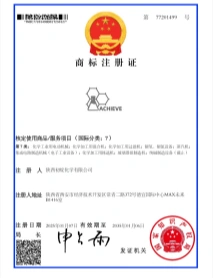
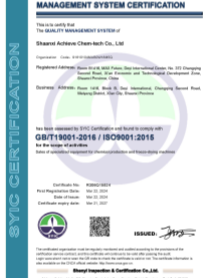
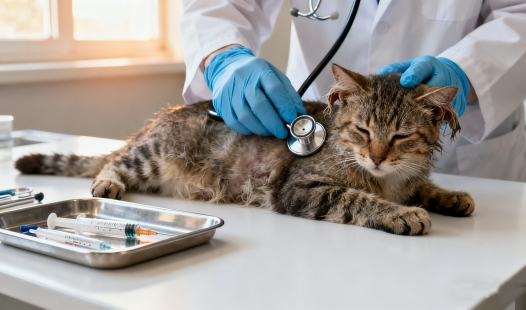
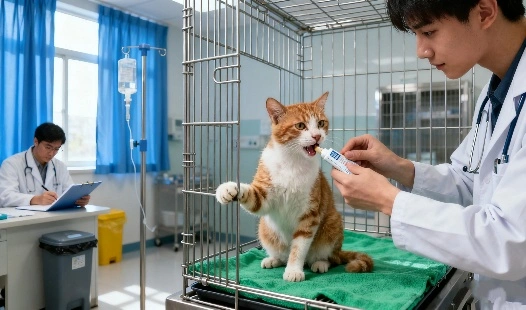
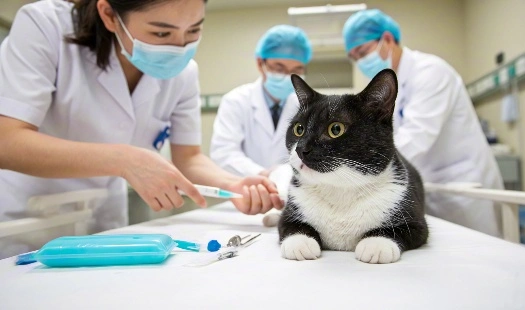
_副本_1759986970404.webp)
